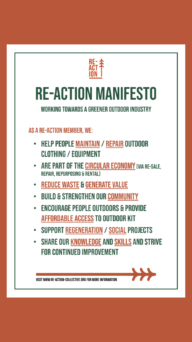As Sally hurtled off to the Mountain Trade Network‘s autumn LISTEX conference at The Snow Centre in Hemel Hempstead last week, delegates were revving up for a debate on how the snowsports industry is waking up to sustainable options for the future.
The panel covered a range of topics including ski and snowboard clothing, climate change, aiming for net zero, and what seems to always be the most contentious item for the wintersports industry: the transport you use to get to your ski resort.
Sally’s top learnings from the debate:
1 Switzerland has a transparent approach to sustainability
Ski giant Switzerland has opted for an umbrella approach to sustainability, providing resorts, hotels and other key snow sports businesses with clear directives on how to develop their green credentials.
For visitors it’s easy to understand, as businesses will be awarded three level ‘badges’: Level 3 – Leading; Level 2 – Engaged; and Level 1 – Committed. It is a simple way to judge how far down the sustainability route a Swiss business, service provider or destination has travelled.
2 You can’t do everything immediately, so aim for manageable targets en route to net zero
It can be all-consuming trying to do everything at once, so a business aiming for net zero should break down its actions into manageable, achievable goals. Charlie Cotton from ecollective calls this the ‘7% rule’, whereby you make regular 7% improvements on the road to net zero.
Extra good news: HotelPlan, which owns ski holiday brands including Inghams and Esprit, has signed up to reach net zero: a big shout out to them.
3 Climate change is affecting resorts already
According to University of Surrey sustainability PhD student Harry Rice, there is growing concern over the impact of increasing temperatures on lower snowsports resorts, the pressure climate change will put on higher resorts and the impact of increased temperatures on the slopes.
Ski resorts are starting to look at how they adapt to this change, weighing up social and economic progress and how the adaptations could impact more heavily on the mountain environment.
4 More of us are driving to the slopes (and it’s easy by EV…)
James Gambrill from the Ski Club of Great Britain presented figures showing that post-pandemic more of us have driven to the mountains.
Reasons for this are unclear, however. Is it because of an increase in airline flight cancellations, passenger worries about catching Covid, price hikes or are we starting to think ‘greener’ in our travel choices?
On a positive note, the ease of driving an EV to the ski slopes is aided by improved EV charging facilities through France.
5 Young people positively embrace BUYING secondhand ski CLOTHES
It is estimated that 64% of young people prefer to buy secondhand clothes. Not just because they are more affordable, but also for the bragging rights: pre-loved fashion is very much on trend and growing across the market.
It’s time to feed that demand. Clear out your ski clothes from your wardrobe. List them for sale (at WhoSki.com, obviously). Lend them, mend them, re-use or re-sell them. Just make sure you don’t allow your ski jackets, ski pants and salopettes to end up in landfill.
Fact: ski textiles are likely to be around long after many of us have stopped skiing.
Expert panel
The eclectic panel of international speakers at LISTEX included Charlie Cotton from travel consultancy ecollective, Myriam Ziesack of the Swiss tourist board which runs Swisstainable, Harry Rice, climate change and sustainability PhD student, our own Sally Warren, co-founder of WhoSki.com, and Iain Martin of SkiFlightFree.
LISTEX, the London International Ski Trade Exchange, is a B2B event that brings together many of the movers and shakers in the snowsports world, from industry leaders to independent specialists.
Thank you to The Snow Centre, Hemel Hempstead, for hosting and Babsi Lapwood of the Mountain Trade Network for organising.















